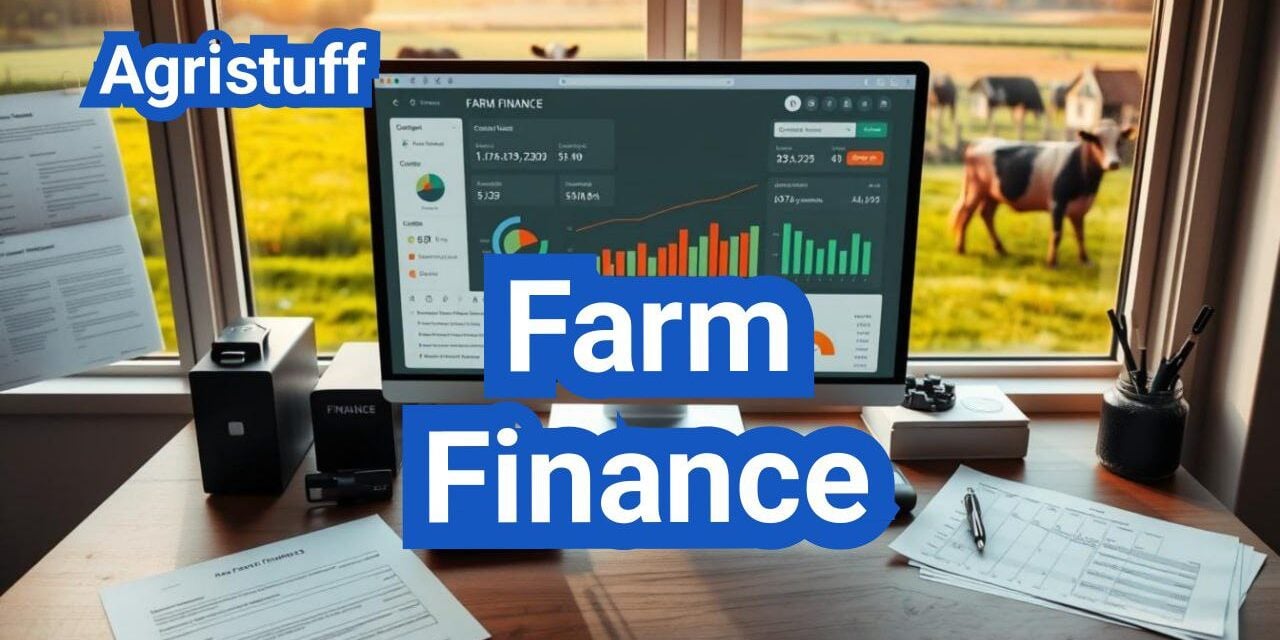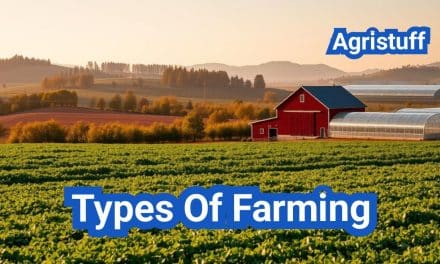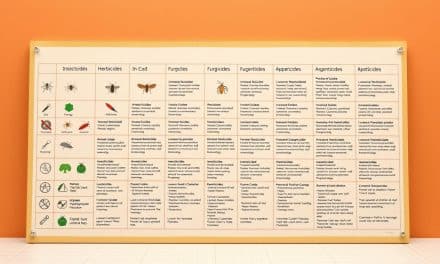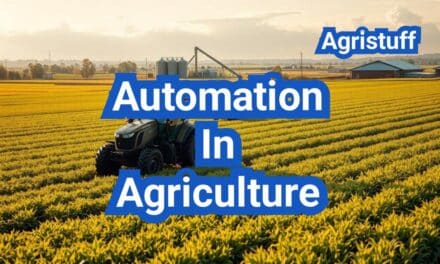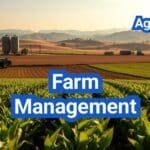Managing cash flow is crucial for the success of any agricultural operation. Understanding how to project and manage financial resources effectively can make the difference between profitability and loss.
According to the Iowa State University Extension, having a grasp on farm finance is essential for making informed decisions. This includes understanding key concepts such as capital expenditures and break-even analysis, which are vital for long-term sustainability.
Effective financial management enables farmers to navigate the complexities of agricultural production, ensuring they can cover expenses and invest in their operations.
Key Takeaways
- Understanding cash flow is critical for agricultural profitability.
- Capital expenditures play a significant role in long-term farm sustainability.
- Break-even analysis helps in making informed financial decisions.
- Effective financial management is key to navigating agricultural complexities.
- Farmers must be able to cover expenses and invest in their operations.
The Essentials of Farm Finance in the U.S.
Farm finance in the U.S. agriculture encompasses a complex array of financial management practices tailored to the unique challenges of agricultural production. The agricultural sector is distinct from other industries due to its reliance on natural resources, sensitivity to weather conditions, and the biological nature of its production processes.
What Makes Agricultural Finance Unique
Agricultural finance is characterized by its unique risk factors, including weather-related risks, commodity price fluctuations, and biological risks associated with crop and livestock production. These factors contribute to the complexity of financial management in farming.
The long production cycles in agriculture also distinguish it from other sectors. Crop production, for instance, can take several months from planting to harvest, while livestock production can span years. This necessitates careful planning and financial management to ensure that farms can cover their expenses throughout the production cycle.
Key Financial Challenges for Modern American Farmers
Modern American farmers face several key financial challenges, including managing cash flow variability, making strategic capital expenditures, and maintaining profitability in the face of fluctuating market prices and production costs. The ability to manage these challenges effectively is crucial for the financial sustainability of farm operations.
Additionally, the increasing complexity of agricultural markets and the growing importance of sustainability and environmental stewardship are adding new dimensions to farm financial management. Farmers must navigate these challenges while ensuring the long-term viability of their operations.
The Cyclical Nature of Farm Income and Expenses
Farm income and expenses are subject to significant variability due to factors such as weather conditions, market trends, and government policies. The USDA reports that farm income can fluctuate substantially from year to year, making it essential for farmers to adopt flexible financial planning strategies.
Understanding and managing the cyclical nature of farm income and expenses is critical for maintaining financial stability. This involves developing strategies to mitigate risks, such as using crop insurance, hedging against price fluctuations, and maintaining cash reserves to cover expenses during periods of low income.
Critical Farm Financial Statements

The financial health of a farm is reflected in its financial statements, which include balance sheets, income statements, and cash flow statements. These documents are crucial for understanding the financial position, profitability, and cash flow management of the farm.
Balance Sheets for Agricultural Operations
A balance sheet provides a snapshot of the farm’s financial position at a specific point in time, typically at the end of the accounting period. It lists the farm’s assets, liabilities, and equity, giving a clear picture of its financial health.
Key components of a balance sheet include:
- Assets: Current assets (e.g., cash, inventory) and non-current assets (e.g., land, equipment)
- Liabilities: Current liabilities (e.g., short-term loans) and non-current liabilities (e.g., long-term loans)
- Equity: The farm’s net worth, calculated as assets minus liabilities
Income Statements and Farm Profitability
An income statement, also known as a profit and loss statement, shows the farm’s revenues and expenses over a specific period. It helps determine the farm’s profitability and is essential for making informed decisions about operations.
Key elements of an income statement include:
- Revenues: Income from the sale of crops, livestock, and other farm products
- Cost of Goods Sold (COGS): Direct costs associated with producing the farm products
- Operating Expenses: Costs related to the day-to-day operation of the farm
- Net Income: The farm’s profit after deducting all expenses from revenues
Cash Flow Statements for Seasonal Operations
A cash flow statement tracks the inflows and outflows of cash over a period, providing insights into the farm’s ability to manage its cash resources. This is particularly important for seasonal operations where cash flow can be irregular.
| Cash Flow Component | Description |
|---|---|
| Operating Activities | Cash inflows from sales and cash outflows for expenses |
| Investing Activities | Cash spent on assets or received from the sale of assets |
| Financing Activities | Cash received from loans or paid out as loan repayments |
By analyzing these financial statements together, farmers can gain a comprehensive understanding of their farm’s financial situation, make informed decisions, and plan for future growth and profitability.
Developing Effective Farm Cash Flow Projections
Developing a comprehensive cash flow projection plan is essential for farmers to manage their finances effectively and ensure long-term sustainability. Effective cash flow projections enable farmers to anticipate and prepare for financial challenges, making informed decisions that impact the overall health of their agricultural operations.
Creating Monthly and Seasonal Cash Flow Forecasts
To create accurate cash flow forecasts, farmers should start by detailing all expected income and expenses on a monthly basis. This involves considering the seasonal nature of farm income and expenses. For instance, a farm that specializes in corn production will have significant expenses in the spring for planting and substantial income in the fall after harvest.
Key components of monthly cash flow forecasts include:
- Projected sales revenue
- Operating expenses (inputs, labor, equipment)
- Capital expenditures (new equipment, land improvements)
- Loan payments and interest
By breaking down the financial data into monthly segments, farmers can better manage their cash flow throughout the year.
Accounting for Revenue Fluctuations in Different Farm Enterprises
Different farm enterprises experience revenue fluctuations due to factors like market prices, weather conditions, and crop yields. To account for these fluctuations, farmers should analyze historical data and market trends to make informed predictions about future revenue.
| Farm Enterprise | Revenue Fluctuation Factors | Mitigation Strategies |
|---|---|---|
| Corn Production | Weather conditions, market prices | Diversify crops, use crop insurance |
| Livestock | Feed prices, disease outbreaks | Hedge feed prices, implement biosecurity measures |
| Dairy | Milk prices, feed costs | Use futures contracts, optimize feed efficiency |
Understanding these fluctuations allows farmers to adjust their cash flow projections accordingly, ensuring they are prepared for potential financial challenges.
Managing Cash Reserves for Operational Continuity
Maintaining adequate cash reserves is crucial for operational continuity, especially during periods of low revenue. Farmers should aim to build cash reserves during profitable years to cover expenses during less profitable periods.
Strategies for managing cash reserves include:
- Setting aside a percentage of annual profits
- Investing in liquid assets
- Regularly reviewing and updating cash flow projections
The University of Illinois Extension advises farmers to regularly review and update their cash flow projections to reflect changing conditions, ensuring they remain relevant and effective.
By following these guidelines and maintaining a proactive approach to cash flow management, farmers can enhance their financial stability and ensure the long-term viability of their operations.
Strategic Capital Expenditure Planning for Farms

To achieve financial stability and growth, farms must prioritize strategic capital expenditure planning. This involves making informed decisions about investments in equipment, land, and infrastructure, which are critical for the long-term success of agricultural operations.
Evaluating Farm Equipment Investments and ROI
Farm equipment investments are significant capital expenditures that require careful evaluation. Farmers should assess the return on investment (ROI) for new equipment, considering factors such as increased efficiency, reduced labor costs, and potential improvements in crop yields.
- Assess the current state of your farm equipment and identify needs for upgrade or replacement.
- Calculate the ROI for potential equipment investments, considering both financial and operational benefits.
- Explore financing options for equipment purchases, such as loans or leasing arrangements.
Land Acquisition and Improvement Planning
Land acquisition and improvement are crucial aspects of capital expenditure planning for farms. When considering land purchases or improvements, farmers should evaluate the potential impact on their operation’s overall productivity and profitability.
Key considerations for land acquisition include:
- The location and quality of the land.
- The potential for irrigation and other infrastructure improvements.
- The impact on the overall size and scale of the farm operation.
Infrastructure Development Considerations
Infrastructure development, such as building repairs or upgrades, storage facilities, and irrigation systems, is another critical area of capital expenditure for farms. Effective planning for these investments can significantly enhance operational efficiency and reduce long-term costs.
Farmers should:
- Conduct thorough assessments of their current infrastructure to identify areas needing improvement or upgrade.
- Prioritize infrastructure investments based on their potential impact on operational efficiency and profitability.
- Explore available funding options, including government programs and grants, to support infrastructure development.
Mastering Break-Even Analysis for Farm Operations
Break-even analysis is a vital tool for farmers to determine the viability of their agricultural enterprises. It helps in understanding the point at which the total cost and total revenue are equal, thereby guiding farmers in making informed decisions.
To effectively conduct break-even analysis, farmers need to consider various factors including production costs, selling prices, and operational expenses. This analysis is crucial for both crop and livestock enterprises.
Calculating Production Break-Even Points for Crops
For crop production, calculating the break-even point involves understanding the costs associated with production, such as seeds, fertilizers, labor, and equipment, against the revenue generated from the sale of the crops.
- Identify all fixed and variable costs associated with crop production.
- Determine the selling price per unit of the crop.
- Calculate the total revenue and total cost to find the break-even point.
Livestock Enterprise Break-Even Analysis
Livestock enterprises require a slightly different approach to break-even analysis, as they involve additional costs such as feed, veterinary care, and labor. The revenue is generated from the sale of livestock or livestock products.
- List all the fixed and variable costs associated with the livestock enterprise.
- Determine the average selling price per unit of livestock or livestock product.
- Compute the break-even point by comparing total costs with total revenues.
Using Farm Break-Even Calculators for Decision Making
Farm break-even calculators are valuable tools that simplify the process of calculating break-even points. These calculators can be found online or developed using spreadsheet software.
Benefits of Using Break-Even Calculators:
- Simplifies complex calculations.
- Helps in making informed decisions regarding production and pricing.
- Enables farmers to adjust their strategies based on the break-even analysis.
By mastering break-even analysis, farmers can enhance their financial management capabilities, leading to more sustainable and profitable farm operations.
Key Performance Indicators in Farm Finance

Understanding key performance indicators (KPIs) is crucial for farm financial management. KPIs provide farmers and agricultural managers with the data needed to make informed decisions about their operations.
Effective farm management relies on tracking various financial metrics. The Farm Financial Scorecard from the University of Minnesota Extension outlines several critical KPIs for evaluating farm financial performance.
Profitability Ratios for Agricultural Operations
Profitability ratios are essential for assessing the financial viability of farm operations. Key ratios include:
- Rate of Return on Assets (ROA): Measures net farm income relative to total assets.
- Rate of Return on Equity (ROE): Evaluates net farm income in relation to farm equity.
- Operating Profit Margin Ratio: Indicates the percentage of revenue remaining after operating expenses.
These ratios help farmers understand their operation’s profitability and make adjustments as needed.
Liquidity Measurements for Farm Businesses
Liquidity metrics are vital for ensuring that farm operations can meet their short-term financial obligations. Important liquidity measurements include:
- Current Ratio: Compares current assets to current liabilities.
- Working Capital: Calculates the difference between current assets and current liabilities.
Maintaining adequate liquidity is crucial for operational continuity and financial stability.
Solvency and Efficiency Metrics That Matter
Solvency and efficiency metrics provide insights into a farm’s long-term financial health and operational efficiency. Key metrics include:
- Debt-to-Asset Ratio: Measures the proportion of assets financed by debt.
- Asset Turnover Ratio: Evaluates the efficiency of asset utilization in generating revenue.
Monitoring these metrics helps farmers identify areas for improvement and make strategic decisions.
By tracking these key performance indicators, farmers can gain a comprehensive understanding of their operation’s financial performance and make data-driven decisions to enhance profitability and sustainability.
Working Capital Management in Agriculture

Effective working capital management is crucial for agricultural operations to navigate seasonal fluctuations and maintain profitability. Working capital, the difference between a farm’s current assets and current liabilities, is essential for meeting short-term financial obligations.
Determining Optimal Working Capital Levels for Your Farm
Determining the optimal level of working capital is a critical decision for farm managers. It involves analyzing the farm’s financial statements, production cycles, and market conditions to ensure sufficient liquidity for operational needs.
Key factors to consider:
- Production costs and revenue cycles
- Inventory management and turnover
- Accounts receivable and payable
- Short-term loan options and credit lines
Strategies to Improve Working Capital Position
Improving working capital position requires a combination of strategies that enhance liquidity and reduce financial strain. Effective techniques include:
- Optimizing inventory levels to match demand
- Managing accounts receivable and payable to improve cash flow
- Renegotiating loan terms to reduce short-term debt
- Implementing cost-saving measures in farm operations
Seasonal Working Capital Requirements
Agricultural businesses face unique challenges due to the seasonal nature of their operations. Understanding and planning for seasonal working capital requirements is vital to maintaining financial stability.
Seasonal considerations:
- Pre-planting expenses for seeds, fertilizers, and equipment
- Harvest costs and labor expenses
- Storage and marketing costs post-harvest
- Adjusting for climate and market fluctuations
Understanding and Managing Debt in Farming

Understanding and managing debt is essential for the long-term success of agricultural businesses. Farmers often rely on debt to finance their operations, from purchasing equipment and land to managing day-to-day expenses. Effective debt management can help farmers maintain financial stability, improve profitability, and ensure the continuity of their operations.
Analyzing Debt-to-Asset Ratios in Agricultural Contexts
The debt-to-asset ratio is a critical financial metric that indicates the proportion of a farm’s assets that are financed by debt. A lower ratio suggests a healthier financial position, while a higher ratio may indicate potential financial stress. Farmers should regularly calculate and analyze their debt-to-asset ratio to make informed decisions about their financial management.
Interpreting Debt-to-Asset Ratios:
- A ratio below 0.3 is generally considered good, indicating that less than 30% of the farm’s assets are financed by debt.
- A ratio between 0.3 and 0.5 may indicate some level of financial risk, requiring careful management.
- A ratio above 0.5 suggests a high level of indebtedness, potentially threatening the farm’s financial stability.
Developing a Strategic Debt Management Plan
A strategic debt management plan is crucial for farmers to manage their debt effectively. This plan should include strategies for reducing debt, improving cash flow, and maintaining a healthy debt-to-asset ratio. By prioritizing debt repayment and optimizing financial resources, farmers can improve their financial health and reduce the risk of financial distress.
Key Components of a Debt Management Plan:
- Assessing current debt levels and financial obligations.
- Identifying areas for cost reduction and improving cash flow.
- Prioritizing debt repayment based on interest rates and urgency.
- Exploring refinancing options to lower interest rates or extend repayment terms.
Refinancing Options for Farm Debt
Refinancing farm debt can be a viable strategy for managing financial obligations. By refinancing, farmers can potentially lower their interest rates, extend repayment periods, or consolidate multiple debts into a single loan. However, refinancing decisions should be made cautiously, considering factors such as interest rates, fees, and repayment terms.
| Refinancing Option | Benefits | Considerations |
|---|---|---|
| Lowering Interest Rates | Reduces annual interest expenses | May involve refinancing fees |
| Extending Repayment Terms | Lowers monthly payments | May increase total interest paid over the loan term |
| Consolidating Debt | Simplifies financial management | May require collateral or a strong credit profile |
By understanding and managing debt effectively, farmers can improve their financial stability and ensure the long-term viability of their operations. Regular analysis of debt-to-asset ratios, development of a strategic debt management plan, and careful consideration of refinancing options are essential components of a comprehensive approach to debt management in farming.
USDA Farm Loan Programs Overview

The USDA provides a range of loan options to help farmers achieve their agricultural goals. These loan programs are designed to support farmers in various aspects of their operations, from purchasing land and equipment to managing day-to-day expenses.
Direct Farm Ownership Loans
Direct Farm Ownership Loans are provided to farmers to purchase or improve farmland, including construction or repair of buildings and other fixtures. These loans can also be used to refinance debt related to farm ownership.
Eligibility: Farmers who cannot obtain credit elsewhere and meet specific eligibility requirements can apply for these loans.
Operating Loans for Day-to-Day Expenses
Operating loans are designed to help farmers cover the costs associated with operating their farms, such as purchasing livestock, feed, seeds, and other supplies. These loans can also be used to refinance certain debts.
Flexibility: Operating loans can be tailored to the specific needs of the farm, providing flexibility in managing cash flow.
Microloans for Small and Beginning Farmers
The USDA’s microloan program offers smaller loan amounts to beginning farmers or those with limited resources. These loans are ideal for small-scale or specialty farming operations.
Benefits: Microloans have less stringent requirements and can be processed more quickly than traditional loans, making them accessible to farmers who need capital rapidly.
Emergency Loan Assistance for Disaster Recovery
Emergency loans are available to farmers who have suffered losses due to natural disasters. These loans can help farmers recover from financial setbacks caused by disasters such as floods, droughts, or other adverse weather conditions.
Support: The USDA provides support through emergency loans to help farmers rebuild and continue their operations.
Farm Service Agency (FSA) Support for Family Farmers
The Farm Service Agency (FSA) is a vital resource for family farmers, providing essential financial assistance and support. Through various loan programs and services, the FSA helps farmers overcome financial challenges and achieve success.
Loan Requirements and Eligibility Criteria
The FSA has specific loan requirements that applicants must meet to be eligible for its programs. These include being a family farmer, having a feasible farm business plan, and demonstrating the ability to repay the loan. The FSA also considers the applicant’s credit history and the potential for the farm to generate sufficient income.
To qualify, farmers must also meet certain eligibility criteria, such as being a beginning farmer, a socially disadvantaged farmer, or a farmer who has experienced a disaster. The FSA evaluates each application on a case-by-case basis, taking into account the unique circumstances of the farm operation.
Step-by-Step Application Process for FSA Programs
Applying for FSA programs involves a straightforward step-by-step process. First, farmers must contact their local FSA office to discuss their needs and eligibility. Next, they will need to complete an application form, providing detailed information about their farm operation and financial situation.
The FSA will then review the application, conduct a credit check, and evaluate the farm’s business plan. If approved, the farmer will receive loan funds or other forms of assistance, such as disaster relief or conservation programs.
Special Programs for Beginning and Socially Disadvantaged Farmers
The FSA offers special programs designed to support beginning and socially disadvantaged farmers. These programs provide targeted financial assistance, training, and technical support to help these farmers overcome unique challenges and achieve success.
For example, the FSA’s Beginning Farmer Loan Program provides financing for farmers who have operated a farm or ranch for less than 10 years. Similarly, the Socially Disadvantaged Farmer Program offers support to farmers who are members of groups that have historically faced barriers to accessing USDA programs and services.
Farm Credit System and Private Lending Options
Understanding the various lending options available is essential for farmers to manage their finances effectively. The agricultural sector has unique financial needs, and several institutions offer specialized services to cater to these requirements.
Farm Credit Loans and Specialized Agricultural Services
The Farm Credit System is a network of cooperatives that provides financial services to farmers, ranchers, and rural communities. It offers a range of loan products, including farm credit loans, which are tailored to the specific needs of agricultural operations. These loans can be used for various purposes, such as purchasing equipment, land, or supplies.
Key Features of Farm Credit Loans:
- Competitive interest rates
- Flexible repayment terms
- Specialized services for agricultural businesses
Commercial Bank Agricultural Lending Programs
Commercial banks also play a significant role in agricultural lending, offering a variety of loan products and services designed for farmers and agricultural businesses. These programs can provide financing for operational needs, expansion, and other business purposes.
| Loan Type | Purpose | Typical Terms |
|---|---|---|
| Operating Loan | Financing for day-to-day operations | Short-term, variable rate |
| Term Loan | Equipment purchases, land acquisition | Long-term, fixed or variable rate |
| Line of Credit | Flexibility for operational expenses | Revolving, variable rate |
Alternative Financing Sources for Farmers
Beyond traditional lending institutions, alternative financing sources are becoming increasingly important for farmers. These include private lenders, crowdfunding platforms, and government-backed loan programs.
Alternative financing options can offer:
- More flexible eligibility criteria
- Innovative loan structures
- Access to capital for non-traditional agricultural businesses
In conclusion, farmers have a variety of lending options available to them, ranging from Farm Credit loans to commercial bank lending programs and alternative financing sources. Understanding these options is crucial for effective financial management and the long-term sustainability of agricultural operations.
Operating Lines of Credit for Seasonal Farm Needs
An operating line of credit can be a lifeline for farmers navigating the ebbs and flows of agricultural income. Seasonal fluctuations in revenue can make it challenging to manage operational expenses, but with a well-secured operating line of credit, farmers can better navigate these financial cycles.
Securing and Managing a Farm Operating Line
Securing an operating line of credit involves several key steps. First, farmers must assess their financial needs and determine the appropriate credit limit. This requires a thorough understanding of their farm’s financial situation, including income statements, balance sheets, and cash flow projections.
Key considerations for securing a farm operating line include:
- Evaluating historical financial data to determine credit needs
- Assessing the farm’s assets and liabilities
- Developing a comprehensive business plan
- Identifying potential collateral
Managing an operating line of credit effectively is crucial to maintaining a healthy financial position. This involves monitoring credit usage, making timely payments, and adjusting the credit limit as needed.
Calculating Appropriate Credit Limits Based on Farm Size
Calculating the appropriate credit limit for a farm operating line involves analyzing the farm’s size, revenue, and expenses. A general rule of thumb is to ensure that the credit limit is sufficient to cover at least six months of operational expenses.
| Farm Size (Acres) | Annual Revenue | Recommended Credit Limit |
|---|---|---|
| 100-500 | $200,000 – $1,000,000 | $50,000 – $200,000 |
| 500-1000 | $1,000,000 – $2,500,000 | $200,000 – $500,000 |
| 1000+ | $2,500,000+ | $500,000+ |
As noted by agricultural finance experts, “A well-managed operating line of credit can provide the necessary flexibility to manage seasonal cash flow fluctuations.” (
Farm Financial Management
).
Strategies for Effective Line of Credit Usage
To maximize the benefits of an operating line of credit, farmers should adopt effective usage strategies. This includes using the credit line for short-term needs, such as purchasing inputs or covering unexpected expenses, and repaying the balance when cash flow improves.
Effective strategies for line of credit usage include:
- Using the credit line for essential expenses only
- Making regular payments to reduce the principal balance
- Reviewing and adjusting the credit limit annually
- Maintaining accurate financial records
Risk Management Through Crop Insurance and Hedging

Managing risk is a critical component of successful farming, involving strategies like crop insurance and hedging. Farmers face a multitude of risks, including adverse weather conditions, pests, diseases, and market fluctuations, which can significantly impact their income.
Types of Crop Insurance Available to U.S. Farmers
The U.S. Department of Agriculture’s Risk Management Agency (RMA) offers various crop insurance options to help farmers mitigate these risks. These include:
- Yield Protection: Covers against yield loss due to weather, disease, or other factors.
- Revenue Protection: Protects against loss of revenue due to price changes or yield loss.
- Crop-Hail Insurance: Provides coverage against hail damage, often purchased as a supplement to other insurance types.
Cost-Benefit Analysis of Insurance Coverage Levels
Farmers must conduct a cost-benefit analysis to determine the appropriate level of insurance coverage. This involves considering the premium costs against the potential benefits of different coverage levels.
| Coverage Level | Premium Cost | Potential Benefit |
|---|---|---|
| 50% | Lower | Limited protection |
| 75% | Moderate | Significant protection |
| 85% | Higher | Maximum protection |
Integrating Insurance into Your Financial Risk Management Plan
Integrating crop insurance into a comprehensive financial risk management plan is crucial. This involves assessing overall farm risk, including market, credit, and operational risks, and determining how insurance fits into the broader risk management strategy.
By combining crop insurance with other risk management tools like hedging, farmers can create a robust plan to protect their operations against various uncertainties.
EQIP and Cost-Share Funding Opportunities
The USDA’s Environmental Quality Incentives Program (EQIP) offers critical funding opportunities for farmers to enhance their conservation efforts and improve environmental quality. This program is a vital component of the USDA’s conservation initiatives, aimed at supporting farmers in adopting practices that are beneficial for the environment.
Overview of the Environmental Quality Incentives Program
The Environmental Quality Incentives Program (EQIP) is administered by the USDA Natural Resources Conservation Service. It provides financial assistance to farmers for implementing conservation practices on their land. The program focuses on achieving environmental benefits such as improved water quality, reduced soil erosion, and enhanced wildlife habitat.
Key Components of EQIP:
- Financial assistance for conservation practices
- Technical support for planning and implementing conservation measures
- Emphasis on environmental outcomes such as water quality improvement and soil conservation
Applying for Cost-Share Conservation Funding
Farmers interested in EQIP funding must apply through their local USDA Natural Resources Conservation Service office. The application process involves assessing the farm’s conservation needs and developing a plan that outlines the practices to be implemented.
Steps to Apply:
- Contact your local USDA Natural Resources Conservation Service office to discuss your conservation needs and eligibility.
- Develop a conservation plan that addresses your farm’s specific environmental challenges.
- Submit your application, ensuring it includes detailed information about the conservation practices you intend to implement.
Maximizing Benefits from Conservation Programs
To maximize the benefits from EQIP and other conservation programs, farmers should carefully plan their conservation practices and ensure they align with the program’s objectives. Additionally, combining EQIP with other USDA conservation programs can enhance overall environmental benefits.
Benefits of Combining Conservation Programs:
| Program | Benefits |
|---|---|
| EQIP | Financial and technical assistance for conservation practices |
| Conservation Stewardship Program (CSP) | Rewards farmers for maintaining and improving existing conservation practices |
| Conservation Reserve Program (CRP) | Provides rental payments for taking sensitive land out of production |
By leveraging these programs, farmers can not only improve their environmental sustainability but also enhance their farm’s productivity and resilience.
Farm Tax Planning and Schedule F Considerations
Understanding and navigating the complexities of farm taxes is essential for farmers to ensure compliance and optimize their financial performance. Farm tax planning involves more than just filing taxes; it’s a strategic process that can significantly impact a farm’s financial health and sustainability.
Understanding Schedule F Tax Filing Requirements
Schedule F is a critical tax form for farmers, used to report farm income and expenses. It’s essential to accurately complete this form to ensure compliance with IRS regulations and to maximize eligible deductions. The IRS Farmer’s Tax Guide provides detailed information on tax filing requirements for farmers, including instructions for completing Schedule F.
Key components of Schedule F include:
- Reporting all farm income, including sales of crops and livestock
- Deducting farm expenses, such as feed, seed, and equipment costs
- Accounting for depreciation of farm assets
Strategic Tax Planning for Agricultural Operations
Effective farm tax planning involves strategic decisions that can minimize tax liability and maximize profitability. This includes considering the timing of income and expenses, utilizing tax credits, and taking advantage of deductions specific to agricultural operations.
Key strategies for farm tax planning:
- Income averaging to smooth out tax liability over several years
- Utilizing Section 179 depreciation for qualifying property
- Considering the tax implications of farm equipment purchases
Common Tax Deductions and Credits for Farmers
Farmers are eligible for various tax deductions and credits that can significantly reduce their tax burden. Understanding these opportunities is crucial for effective farm tax planning.
| Tax Deduction/Credit | Description |
|---|---|
| Fuel Tax Credit | A credit for taxes paid on fuel used in farming operations |
| Conservation Programs | Deductions or credits for participating in conservation programs |
By understanding Schedule F requirements, engaging in strategic tax planning, and utilizing available tax deductions and credits, farmers can optimize their tax situation and improve their overall financial performance.
Building a Sustainable Farm Financial Future
Effective farm financial planning is crucial for the long-term sustainability of agricultural operations. By understanding and managing cash flow, capital expenditures, and break-even analysis, farmers can make informed decisions to drive their business forward.
A well-structured financial plan enables farmers to navigate the cyclical nature of farm income and expenses, mitigate risks, and capitalize on opportunities. The Farm Financial Management book highlights the importance of long-term financial planning for farm sustainability.
To build a sustainable farm financial future, farmers must prioritize ongoing financial planning and management. This includes regularly reviewing and updating financial statements, managing debt, and leveraging USDA farm loan programs and other financial resources.
By adopting a proactive approach to farm financial planning, farmers can ensure the viability of their operations, achieve their business goals, and contribute to a more resilient agricultural industry.
FAQ
What is farm finance, and why is it important for agricultural operations?
Farm finance refers to the management of financial resources for farming operations, including cash flow, capital expenditures, and break-even analysis. It is crucial for ensuring the sustainability and profitability of agricultural businesses.
How do I create a cash flow projection for my farm?
To create a cash flow projection, you need to forecast your monthly income and expenses, accounting for seasonal fluctuations and managing cash reserves to ensure operational continuity.
What is a break-even analysis, and how is it used in farm finance?
Break-even analysis is a financial calculation that determines the point at which your farm’s revenue equals its total fixed and variable costs. It is used to assess the viability of different farm enterprises and make informed decisions.
What are the key performance indicators (KPIs) used in farm finance?
KPIs in farm finance include profitability ratios, liquidity measurements, and solvency and efficiency metrics. These indicators help farmers assess their operation’s financial health and make data-driven decisions.
How do I determine the optimal working capital level for my farm?
To determine the optimal working capital level, you need to consider your farm’s size, production cycle, and seasonal requirements. Strategies to improve working capital include managing accounts receivable and payable, and maintaining cash reserves.
What are the different types of USDA farm loan programs available?
The USDA offers various farm loan programs, including direct farm ownership loans, operating loans, microloans, and emergency loan assistance for disaster recovery. These programs provide financing options for farmers to purchase land, equipment, and supplies.
How do I apply for FSA loan programs, and what are the eligibility criteria?
To apply for FSA loan programs, you need to meet the eligibility criteria, which include being a beginning or socially disadvantaged farmer, having a feasible business plan, and demonstrating repayment ability. The application process involves submitting a loan application and supporting documentation.
What is the role of crop insurance in managing risk for farmers?
Crop insurance helps farmers manage risk by providing financial protection against crop failures, revenue losses, or other unforeseen events. There are different types of crop insurance available, including yield-based and revenue-based insurance.
How can I maximize benefits from EQIP and other cost-share funding opportunities?
To maximize benefits from EQIP and other cost-share funding opportunities, you need to understand the program requirements, apply for the relevant conservation practices, and implement the approved conservation plan.
What are the key considerations for farm tax planning and Schedule F?
Farm tax planning involves understanding Schedule F tax filing requirements, identifying common tax deductions and credits, and implementing strategic tax planning strategies to minimize tax liabilities.
How do I secure and manage an operating line of credit for my farm?
To secure an operating line of credit, you need to demonstrate your farm’s creditworthiness, calculate the appropriate credit limit, and manage the line of credit effectively to meet your seasonal needs.
What are the different lending options available to farmers, and how do they compare?
Farmers can access various lending options, including Farm Credit loans, commercial bank agricultural lending programs, and alternative financing sources. Each option has its advantages and disadvantages, and the choice depends on the farm’s specific needs and circumstances.
Conclusion of: Farm Finance 101
Why farm finance matters (and why this guide exists)
Farm finance is the operating language of a resilient U.S. farm: it helps you predict cash needs, choose when to invest, and prove profitability to lenders and partners. In plain terms, farm finance lets you see the whole picture—income timing, expenses, debt, and risk—so you can make confident decisions in volatile seasons. This guide turns the core pillars—cash flow, capital expenditures (CapEx), and break-even analysis—into practical steps you can apply this year in farm finance USDA ERS: Farm Sector Income & Finances
Farm finance vs. “ordinary” small-business finance
Unlike many small businesses, farm finance must handle intense seasonality, weather shocks, commodity price swings, and long-lived assets like land and machinery. Those realities make liquidity and timing more critical in farm finance than in most enterprises. Building plans that reflect planting and harvest cycles, insurance deadlines, and marketing windows separates healthy operations from struggling ones in farm finance USDA ERS overview of farm finances
The four core financial statements behind farm finance
To manage farm finance well, maintain four statements: (1) income statement for profitability, (2) balance sheet for solvency and liquidity, (3) statement of owner’s equity for changes in net worth, and (4) statement of cash flows for timing of money in and out. Together they drive the metrics every lender expects in farm finance, from current ratio to debt-to-asset to term-debt coverage in farm finance UMN Extension: Farm finance statements
Cash vs. accrual accounting—and Schedule F in farm finance
Many smaller U.S. farms report taxes on a cash basis (Schedule F), yet strong managers still track accrual measures to understand true profitability and inventory changes in farm finance. Depreciation methods, prepaid expenses, and inventory elections all shape what you see on paper versus what cash actually does in farm finance. Coordinate accounting choices with your tax professional to keep farm finance aligned with strategy IRS Publication 225: Farmer’s Tax Guide
Cash flow: the heartbeat of farm finance
A cash-flow statement shows when cash arrives and leaves, separate from book profit—vital for scheduling inputs, payroll, family living, and debt service in farm finance. Because receipts often bunch at harvest while bills hit monthly, a rolling 12-month cash-flow keeps farm finance steady and reduces expensive short-term borrowing in farm finance UMN Extension: Statement of cash flows
How to build a 12-month cash-flow plan for farm finance
In farm finance planning, list monthly inflows (crop and livestock sales, custom work, government payments) and outflows (seed, feed, fertilizer, fuel, labor, rent, repairs, taxes, insurance, principal and interest). Update monthly as prices, yields, and weather shift. This living plan exposes crunch points and gives lenders confidence in your farm finance approach Penn State Extension: Managing Cash Flow
Templates lenders recognize in farm finance
Present cash-flow projections using templates familiar to ag lenders to streamline underwriting in farm finance. The FSA-2038 format, for example, organizes inflows, outflows, and operating lines in a way that credit officers expect—improving the speed and clarity of farm finance conversations USDA FSA-2038 Cash-Flow Projection (PDF)
Liquidity and repayment capacity: two KPIs central to farm finance
In farm finance, liquidity metrics (current ratio; working capital to gross revenue) show your cushion for near-term shocks, while repayment capacity (term-debt coverage ratio) shows whether cash can service term loans. Track these quarterly and after harvest to keep farm finance decisions grounded in facts rather than hopes in farm finance UMN Extension: Ratios & Measurements
Capital expenditures (CapEx) in farm finance: what counts and why
CapEx covers long-lived assets—tractors, combines, barns, pivots, grain bins—that shape debt load, depreciation, and cash requirements in farm finance for years. Coordinate purchase timing with tax strategy so deductions don’t create future cash-flow mismatches in farm finance, and always compare new-versus-used cost per hour in farm finance IRS Publication 225 (depreciation & elections)
Funding CapEx with USDA programs in farm finance
When commercial credit is tight, USDA Farm Service Agency direct and guaranteed loans can finance land, equipment, and improvements, often critical to multi-year projects in farm finance. These programs can bridge young or expanding operations into bankability within disciplined farm finance plans USDA FSA: Farm Loan Programs
Farm Credit System & community banks in farm finance
Beyond programs, Farm Credit System associations and community banks remain core partners in farm finance, offering operating lines, term notes, and real estate loans tailored to agriculture. Strong records and realistic projections keep the conversation smooth in farm finance and can improve rate and terms in farm finance Farm Credit Administration: FCA in Brief
Conservation cost-share to stretch CapEx in farm finance
NRCS’s Environmental Quality Incentives Program (EQIP) can offset part of qualifying conservation investments—irrigation efficiency, nutrient management, waste systems—reducing out-of-pocket CapEx and shortening payback in farm finance. Check local ranking cycles and eligible practices to align with your capital plan in farm finance NRCS: EQIP Overview
Risk management and cash-flow stability in farm finance
Crop insurance helps stabilize revenue against weather and price risk, anchoring cash flow in farm finance when production or markets disappoint. Work with a licensed agent to match coverage level and unit structure to your operation, improving lender confidence in your farm finance plan in farm finance USDA RMA: Beginner’s Guide
Break-even basics that guide pricing in farm finance
Break-even price = (fixed costs + variable costs) ÷ expected yield/output. In farm finance, this calculation shapes marketing targets and input decisions. Use enterprise budgets to separate costs by enterprise and to test scenarios, so farm finance decisions reflect expected yield and price realities in farm finance UMD Extension: Enterprise Budgeting
Crop break-evens: connect agronomy to farm finance
Use current enterprise budgets for your region to estimate per-acre costs and break-even prices for corn, soybeans, wheat, or specialty crops. Then stress-test yield and price to see how margins move in farm finance. This turns agronomy assumptions into financial signals you can act on in farm finance Iowa State Ag Decision Maker: Breakeven Worksheet
Livestock break-evens: feed and throughput drive farm finance
In livestock enterprises, feed conversion, days on feed, mortality, and cull rates dominate unit cost. Small changes in average daily gain or feed price can swing margins, so scenario testing is essential in farm finance. Build budgets per head or per cwt and update quarterly in farm finance Iowa State AgDM: Livestock Enterprise Budgets
KPI dashboard: the ratios that sharpen farm finance decisions
A short KPI set keeps farm finance focused: current ratio, working capital to gross revenue, debt-to-asset, debt service coverage, rate of return on assets/equity, and asset turnover. Post these on a one-page scoreboard you review monthly to guide farm finance actions in farm finance UW–Extension: Farm Finance Scorecard (PDF)
Benchmark with public data for farm finance context
Use ERS charts to compare expenses, cash receipts mix, and income by state and sector so your farm finance numbers sit in context. If your fertilizer share or interest expense is well above peers, dig into causes and negotiate or restructure where possible in farm finance ERS: Charts & Maps
Taxes and depreciation planning inside farm finance
Coordinate CapEx timing with Section 179 and bonus depreciation to smooth tax and cash impacts in farm finance. Prepaids and inventory elections can help with year-end planning, but ensure they won’t cause a cash squeeze next season in farm finance. Document the plan for your lender in farm finance IRS Publication 225 (depreciation, prepaids)
Lender-ready package checklist for farm finance
Expect to provide current and prior-year balance sheets, income statements, a 12-month cash-flow projection, capital plan, and tax returns, plus explanations of risk management and marketing in farm finance. A clear narrative around assumptions makes underwriting faster and friendlier in farm finance USDA FSA: Loan Programs (documentation)
Tools and training that professionalize farm finance
The Center for Farm Financial Management (FINPACK/FINBIN) offers software and education widely used by lenders, helping you standardize analysis and reporting in farm finance. Using common tools keeps everyone on the same page and elevates farm finance conversations with advisors in farm finance CFFM (FINPACK/FINBIN)
Common mistakes that derail farm finance (and fixes)
Frequent pitfalls include mixing household and business cash, over-optimistic yield/price assumptions, skipping mid-season cash-flow updates, and delaying machinery replacement planning in farm finance. Institute quarterly reviews and scenario tests to correct course early in farm finance UMN Extension: When results disappoint
Programs tailored to beginners that support farm finance
If you’re within your first 10 years of operation, USDA Beginning Farmer resources and FSA beginning-farmer loans can provide training and tailored credit pathways that strengthen farm finance foundations. Pair education with conservative leverage to build staying power in farm finance USDA: Beginning Farmers & Ranchers
A simple 90-day plan to tighten farm finance
Next 30 days: assemble last two years of statements, draft a 12-month cash-flow, and list CapEx priorities in farm finance. Days 31-60: compute KPIs, price insurance, and build crop/livestock break-evens in farm finance. Days 61-90: review with your lender and extension advisor, then lock marketing and financing steps in farm finance Penn State Extension: Cash-Flow Planning Guide
Benchmark your farm finance against peers annually
At year-end, compare your margins, cost shares, and leverage with public datasets to spot outliers in farm finance. If interest expense is rising faster than peers, consider refinancing, additional working capital, or asset sales that strengthen farm finance resilience in farm finance ERS: Farm Sector Income (annual context)
Use conservative assumptions to protect farm finance
Build budgets with realistic yields and slightly discounted prices while padding key inputs, so farm finance is robust to surprises. If upside arrives, great—if not, you remain solvent and agile in farm finance, which is the goal in farm finance Iowa State Ag Decision Maker (budget tools)
How to talk to lenders about risk in farm finance
Lead with your cash-flow, break-evens, and insurance plan, then outline contingency actions if prices or yields fall in farm finance. Lenders reward clear, data-driven planning with better terms, which compounds advantages over time in farm finance USDA FSA: Understanding credit options
Final thought
Strong records, a rolling 12-month cash-flow, disciplined CapEx timing, and a short KPI dashboard turn uncertainty into manageable risk in farm finance. Use extension worksheets and lender-recognized templates to make decisions fast and transparent, and review assumptions quarterly so farm finance remains proactive rather than reactive in farm finance USDA ERS: Farm Business Income
Sources & References
USDA Economic Research Service – Farm Sector Income & Finances
ERS – Charts & Maps of U.S. Farm Income and Finances
IRS Publication 225: Farmer’s Tax Guide
USDA FSA – FSA-2038 Cash-Flow Projection (PDF)
NRCS – Environmental Quality Incentives Program (EQIP)
USDA RMA – Beginner’s Guide to Crop Insurance
UMN Extension – Ratios & Measurements in Farm Finance
UMN Extension – Statement of Cash Flows
Iowa State Ag Decision Maker – Breakeven Worksheet for Crops
Iowa State Ag Decision Maker – Livestock Enterprise Budgets
Farm Financial Standards Council – Financial Guidelines (overview)
Farm Credit Administration – FCA in Brief
Center for Farm Financial Management (FINPACK/FINBIN)

